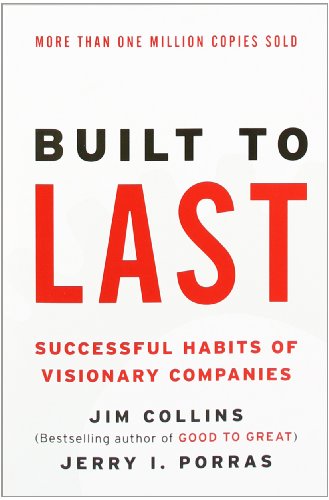Built to Last: Successful Habits of Visionary Companies (Harper Business Essentials)
Drawing upon a six-year research project at the Stanford University Graduate School of Business, James C. Collins and Jerry I. Porras took eighteen truly exceptional and long-lasting companies and studied each in direct comparison to one of its top competitors. They examined the companies from their very beginnings to the present day — as start-ups,
Drawing upon a six-year research project at the Stanford University Graduate School of Business, James C. Collins and Jerry I. Porras took eighteen truly exceptional and long-lasting companies and studied each in direct comparison to one of its top competitors. They examined the companies from their very beginnings to the present day — as start-ups, as midsize companies, and as large corporations. Throughout, the authors asked: “What makes the truly exceptional companies different from the comparison companies and what were the common practices these enduringly great companies followed throughout their history?”
Filled with hundreds of specific examples and organized into a coherent framework of practical concepts that can be applied by managers and entrepreneurs at all levels, Built to Last provides a master blueprint for building organizations that will prosper long into the 21st century and beyond.
Built to Last became an instant business classic. This audio abridgement is read by the authors, who alternate chapters. Collins is a bit breathlessly enthusiastic, but clear and interesting; Porras, unfortunately, is poorly inflected and wooden. They set out to determine what’s special about “visionary” companies–the Disneys, Wal-Marts, and Mercks, companies at the very top of their game that have demonstrated longevity and great brand image. The authors compare 18 “visionary” picks to a control group of “successful-but-second-rank” companies. Thus Disney is compared to Columbia Pictures, Ford to GM, and so on.
A central myth, according to the authors, is that visionary companies start with a great product and are pushed into the future by charismatic leaders. Usually false, Collins and Porras find. Much more important, and a much more telling line of demarcation between a wild success like 3M and an also-ran like Norton, is flexibility. 3M had no master plan, little structure, and no prima donnas. Instead it had an atmosphere in which bright people were not afraid to “try a lot of stuff and keep what works.”
If you listen to this audiocassette on your daily commute, you may discover whether you are headed to a “visionary” place of work–and, if so, whether you are the kind of employee who fits your employer’s vision. (Running time: two hours, two cassettes) –Richard Farr







Comments